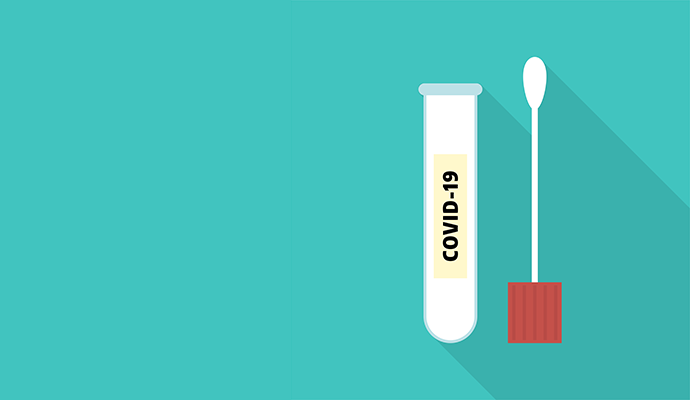New CMS Guidance Could Increase COVID-19 Testing Rates, Spending
Coronavirus testing rates and costs have fluctuated with CMS guidance, but the most recent changes may spur an increase in coronavirus testing rates and costs.

Source: Getty Images
- Since the Biden administration has eliminated the ability to deny coronavirus testing claims due to “medical necessity,” payers should expect higher coronavirus testing rates across all care settings, according to an analysis by Katherine Hempstead, senior policy adviser at the Robert Wood Johnson Foundation.
Hempstead commented on the results of a Wakely Consulting Group (Wakely) study. Wakely gathered its data from national carriers’ enrollment and claims information on 11 million members. The time period for this data spanned from January 1, 2020 through September 30, 2020.
The members may not correlate to the national commercial population in demographics, health status, or location, Wakely warned.
Nine in ten of the 11 million members did not get a coronavirus test that resulted in a claim in the nine months studied, the study found. However, 1.1 million members did receive the test—some of them more than once, which resulted in the insurers receiving claims for a total of 1.6 million tests.
The median age of the members who received a coronavirus test was 38 years old and 58 percent of them were female.
The median copay for commercially-insured patients was $51 for antigens tests in less than the top one percent.
The costs for coronavirus tests rose over time due to changes in billing procedures. For polymerase chain reaction (PCR) tests, the cost went from $62 in March to $91 two months later and in September the cost was almost 10 percent higher.
CMS raised costs for labs with high throughput technology, but then doubled back on that policy in an announcement made on October 15, 2020 which went into effect on the first day of the new year.
CMS released its most recent guidance on the subject at the end of February. The guidance clarified that health insurers are expected to cover the costs of testing, even for individuals who are asymptomatic and have no known exposure to COVID-19.
“When an individual seeks and receives a COVID-19 diagnostic test from a licensed or authorized health care provider, or when a licensed or authorized health care provider refers an individual for a COVID-19 diagnostic test, plans and issuers generally must assume that the receipt of the test reflects an ‘individualized clinical assessment’ and the test should be covered without cost sharing, prior authorization, or other medical management requirements,” the guidance stated.
Hempstead projected that this could lead to higher testing rates among asymptomatic, young adults. She warned that healthcare spending on coronavirus tests could rise again as a result.
“Providers who have benefited from this temporary cash market will have to adjust their business model when patients realize they no longer have pay out of pocket,” Hempstead said.
“While this could cause some upward pressure on allowed amounts for antigen tests, the new guidance and the accompanying investments in supply may also speed the development of cheaper rapid tests, including home tests and rapid PCR tests.”
These changes could improve the accessibility of rapid testing across care settings. Previously, PCR tests were mostly used in hospital outpatient or laboratory settings and antigen tests were primarily utilized at urgent care sites and physician offices.
CMS issued guidance in April 2020 that directed health plans to cover diagnostic coronavirus testing.
However, in some spaces, payers have been hesitant to take on that financial burden. For example, there have been controversies over whether testing for asymptomatic individuals and school-required testing should be covered without cost-sharing.
Health plans have urged the federal government to take greater financial responsibility for testing coverage. Payer organizations argued that payers should not have to cover the costs for public health surveillance.
Recently, the federal government complied with these requests. The most recent coronavirus relief package set aside $70 billion for the coronavirus vaccine, coronavirus testing, and to support the workforce and $47.8 billion will go towards a national coronavirus testing strategy.
